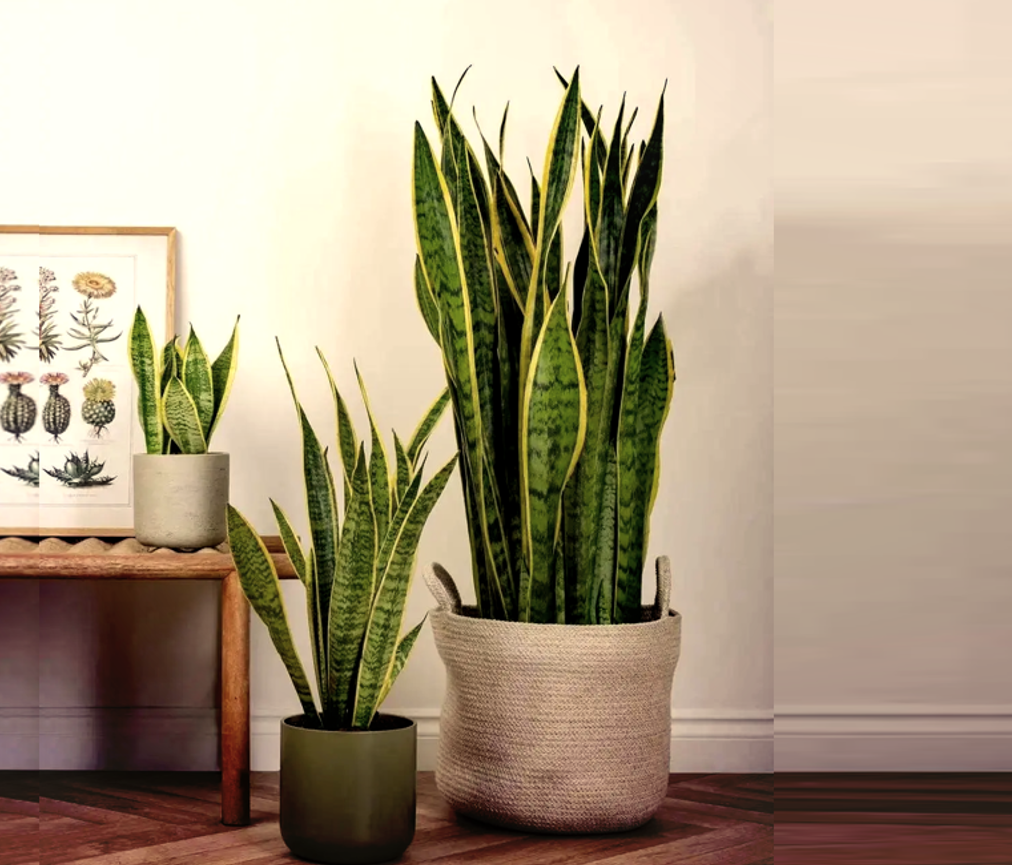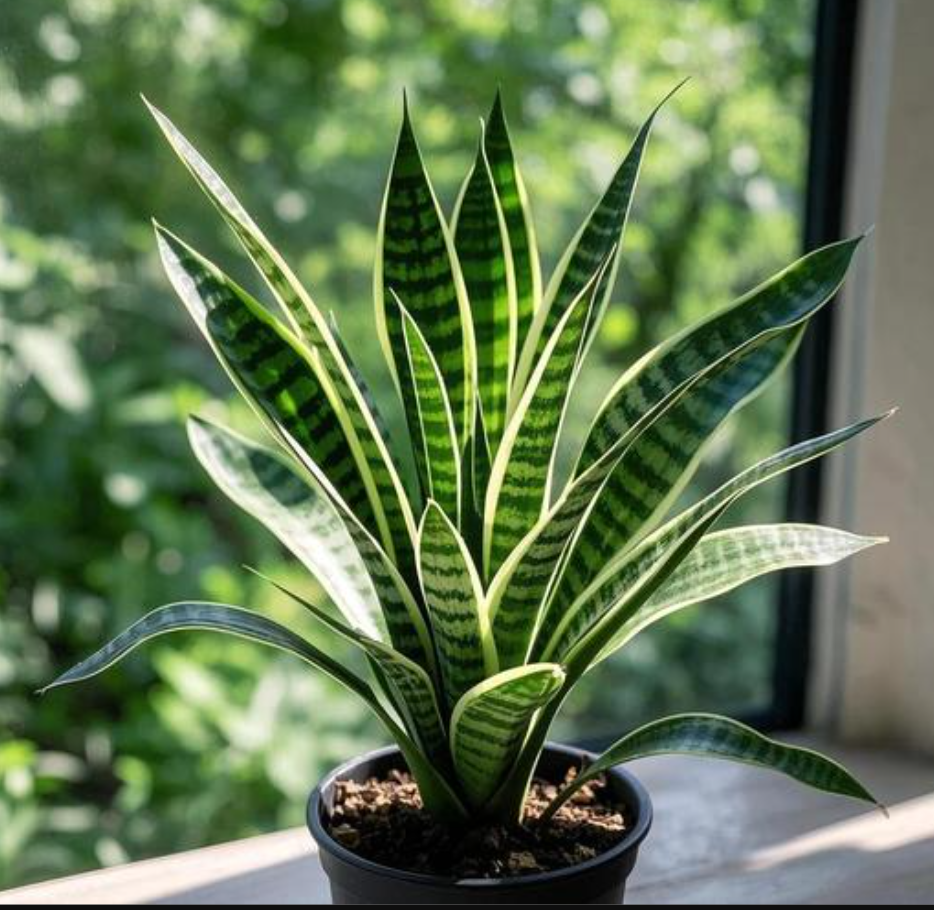The Snake Plant, scientifically known as Dracaena trifasciata (formerly classified under the Sansevieria genus), belongs to the Asparagaceae family. It is a popular houseplant renowned for its robust growth and low-maintenance care requirements.
In China, it is also referred to by various names such as Tiger Tail Orchid, Tiger Skin Orchid, Golden Tail Orchid, or Mother-in-Law’s Tongue. The term “orchid” in these names is not exclusive to true orchids but is often used to describe ornamental plants with elegant, slender, or luxurious foliage, reflecting Chinese naming conventions for decorative plants.
The name “Snake Plant” originates from its upright, thick leaves adorned with alternating light and dark stripes, resembling a tiger’s tail, which gives it a bold and distinctive appearance.
Meanwhile, the moniker “Mother-in-Law’s Tongue” is a colorful colloquialism from China. The sharp, straight, and rigid leaves are humorously likened to the “sharp tongue of a mother-in-law,” blending wit with cultural symbolism in plant naming traditions.
Native to West Africa, the Snake Plant is widely distributed in arid regions from Nigeria to Kenya and Tanzania. It is cultivated in tropical and subtropical areas globally.

With its upright, vibrant green leaves, the Snake Plant adds vitality and luck when placed in living rooms or offices. Image: Baidu
In China, it thrives in the southern regions, often grown indoors or outdoors in warm areas with well-draining soil. Highly adaptable, it tolerates drought, various soil types, and both shaded and well-lit environments.
The Snake Plant is a herbaceous perennial with strap-like leaves emerging from the base, measuring 30-120 cm in length and 3-8 cm in width. Its flowers form clusters, appearing white or pale green, typically blooming in November-December. The fruits are berries, approximately 7-8 mm in diameter.
Cultivation and Care
The Snake Plant is easy to grow and thrives in diverse living and working spaces. It requires minimal care, flourishing even in low-light conditions or less fertile soil.
It prefers loose, well-draining soil. Sandy soil or a mix of potting soil with coconut coir, coconut fiber, and sand is ideal. Pots should have drainage holes to prevent waterlogging, ensuring root health and sustained growth.
While it tolerates shade, ample light enhances leaf vibrancy and stripe definition. In summer, avoid direct harsh sunlight to prevent leaf scorch. In winter, maintain temperatures above 10°C to sustain growth. Optimal temperatures range from 18-27°C; below 13°C slows growth, and below 10°C risks root rot.
Water sparingly. During the growing season, water evenly but allow soil to dry slightly between waterings. In winter, reduce watering to prevent root rot.
Fertilize minimally; apply diluted organic fertilizer or NPK monthly during the growing season. Avoid fresh or concentrated fertilizers to prevent root damage.

Beyond aesthetics, the Snake Plant purifies air, creating a fresh environment and balancing feng shui energy. Image: Baidu
The Snake Plant is largely pest-resistant but may face issues like root rot, leaf diseases, mealybugs, or spider mites. Prune affected leaves and maintain regular cleaning as needed.
Propagation is achieved through leaf cuttings or division. For leaf propagation, cut healthy leaves, insert them into moist soil, and maintain temperatures of 18-25°C. Roots typically develop within 25-30 days.
Division involves separating basal shoots and planting them directly into pots or loose soil. This method ensures rapid growth and preserves the parent plant’s characteristics.
Feng Shui Compatibility
In feng shui, the Snake Plant symbolizes resilience, strength, and vitality. It is particularly auspicious for those born in the Year of the Rat, Dragon, Horse, and Rabbit. Its upright, robust leaves absorb negative energy and harmonize the living space.
Placing it in living rooms or offices attracts wealth, luck, and a sense of peace and energy for occupants.
It aligns with the Wood and Fire elements in feng shui. The deep green and yellow stripes of its leaves harmonize with Wood, fostering mental stability and positive energy.
For those with a Fire element, it balances yin and yang, promoting tranquility, prosperity, and focus in work and study.
Positioning the Snake Plant indoors, in offices, or near east or south-facing windows maximizes its feng shui benefits. Additionally, it purifies air by absorbing toxins like formaldehyde, CO, and benzene, ensuring a healthy and pleasant environment.
Get Rid of These 7 Things This Spooky Season to Bring Good Fortune and Prosperity!
The act of boldly discarding the unnecessary is a liberating step towards embracing a brighter future. It is a conscious decision to let go of the past and create space for positive and meaningful change. By shedding what no longer serves a purpose, you open up a world of possibilities and welcome a future filled with newfound potential and prosperity.






































